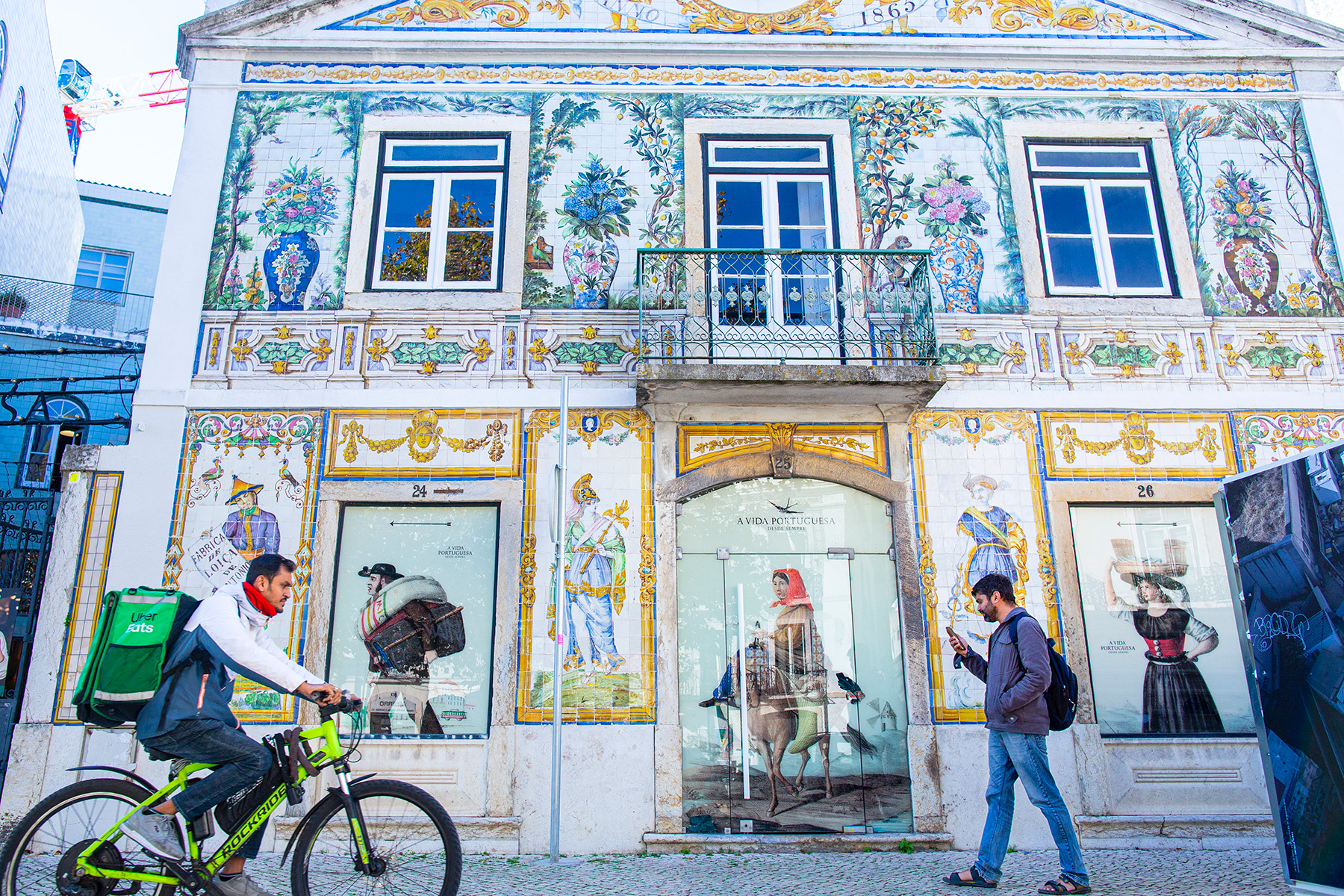
Tracing the History and Geography of Portuguese Tilemaking
Geography
Architecture
Europe
Analyze how culture and technology have changed the ways tiles have been made in Portugal for over 500 years.
The following activities and abridged text build off, "Discover the History of Portuguese Tiles as Artistic Icons," written by Jack Zahora and photographed by Tara Todras-Whitehall.
WARM UP
Scan the article’s photos and captions to predict its main idea
IF YOU ONLY HAVE 15 MINUTES ...
Analyze tile origins, influences and patterns. Use article excerpts to cite evidence, discuss meanings and reflect on what resonates most.
IF YOU ONLY HAVE 30 MINUTES ...
Construct a timeline and analyze how each new tilemaking technique changed production methods and cultural expression.
Portugal’s Enduring Love of Tilemaking
Directions: As you read, you will notice certain words are highlighted. See if you can figure out what these words mean based on the context. Then click the word to see if you’re right. After reading, answer the questions at the bottom of the page.
A young Japanese couple pauses before the white and-cobalt tile display in the window of Cerâmica S. Vicente, a ceramics studio in Lisbon, Portugal. Through the glass, they glimpse 32-year-old Miguel Moura pressing soft clay into a plaster mold with his fingertips. They are among the hundreds hundreds who stream daily into his small but bustling atelier in the city’s São Vicente neighborhood.
“There’s a delicate balance between welcoming people in and dedicating our very small team to production,” Moura says, just as another knock at the door interrupts him. His commissions often run to thousands of tile, each order requiring three to six months of work.
Portuguese tiles, known locally as azulejos, take their name from the Arabic word al-zilli, meaning “small, polished stone.” Ranging from tiles of solid, vibrant colors to ornate scenes of cherubs and flowers, azulejos stand at the pinnacle of Portugal’s artistic heritage. They cover apartments, churches, subway stations, theaters—nearly every surface across the country.
Yet Moura is a standout among his peers for reviving a rarely used method from a bygone era—one that reaches Portugal’s first encounter with tilemaking during a royal trip to Seville, Spain, in 1498.
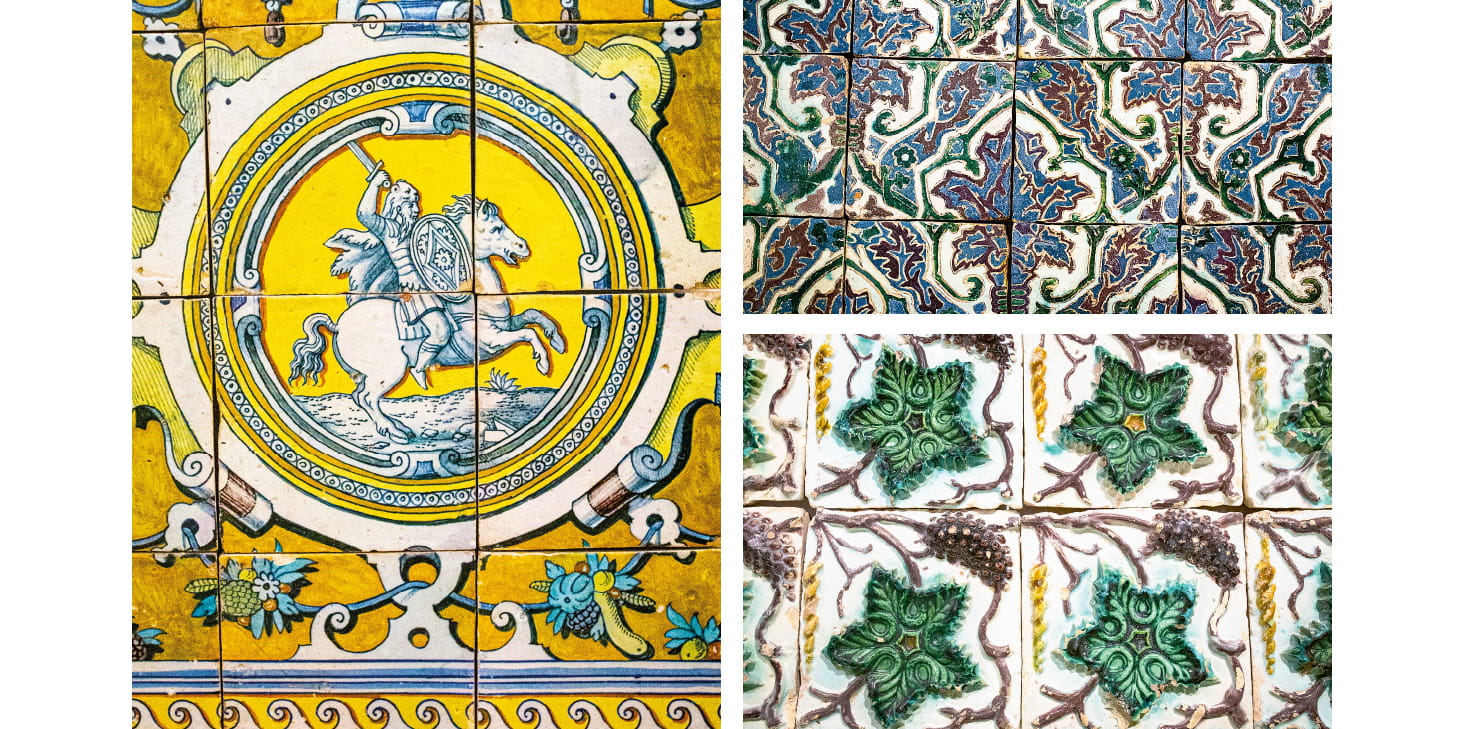
TILE’S DEFINING ERA IN JUST 50 STEPS
Each year, hundreds of thousands of tourists visit Lisbon’s Museu Nacional do Azulejo (National Tile Museum). Few realize they are walking through one of the most transformative half centuries of Portuguese art history.
With just 50 paces, the museum’s lead curator, Constança Lima, guides visitors through the full chronology of ceramic tile-making. It begins with a nearly 10-foot-tall Moorish-style mosaic of geometric patterns and culminates in a wall of Christian iconography.

Moorish tiles are seen under a window of the Madre de Deus church inside the National Tile Museum.
At the start of the exhibition is one of the earliest examples of Islamic tilemaking in Portugal. In 1492, shortly after the end of Arab rule in the Iberian Peninsula, King Manuel I visited Seville, Spain. He had become enamored with the esthetic Moorish ceramic tiles in the Alhambra Palace. Spanish artisans under Muslim rule used the alicatado technique: tiles were first painted and baked, then painstakingly cut into pieces and pressed into mortar to form mosaic shapes such as spindles, petals, and leaves. They were devoid of any portrayal of people, as was the Muslim tradition.
Upon his return to Portugal, King Manuel I commissioned Moorish artisans in Spain—known as Moriscos, who had been forced to convert to Christianity or face exile—to make tiles that would cover the walls of his palace in Sintra, just outside Lisbon. The tiles were then shipped from Spain to Portugal.
Tilemaking, inspired by Islamic architecture, flourished in Portugal under the Christian king. These tiles were not considered religious by the Portuguese, and their popularity exploded among the aristocracy. Even the Museu Nacional do Azulejo, built in 1509 as a Catholic convent called the Madre de Deus, boasts Moorish tiles along the walls leading up to its church. Many are patterned with repetitive floral motifs in red, green, and blue ceramic pieces.
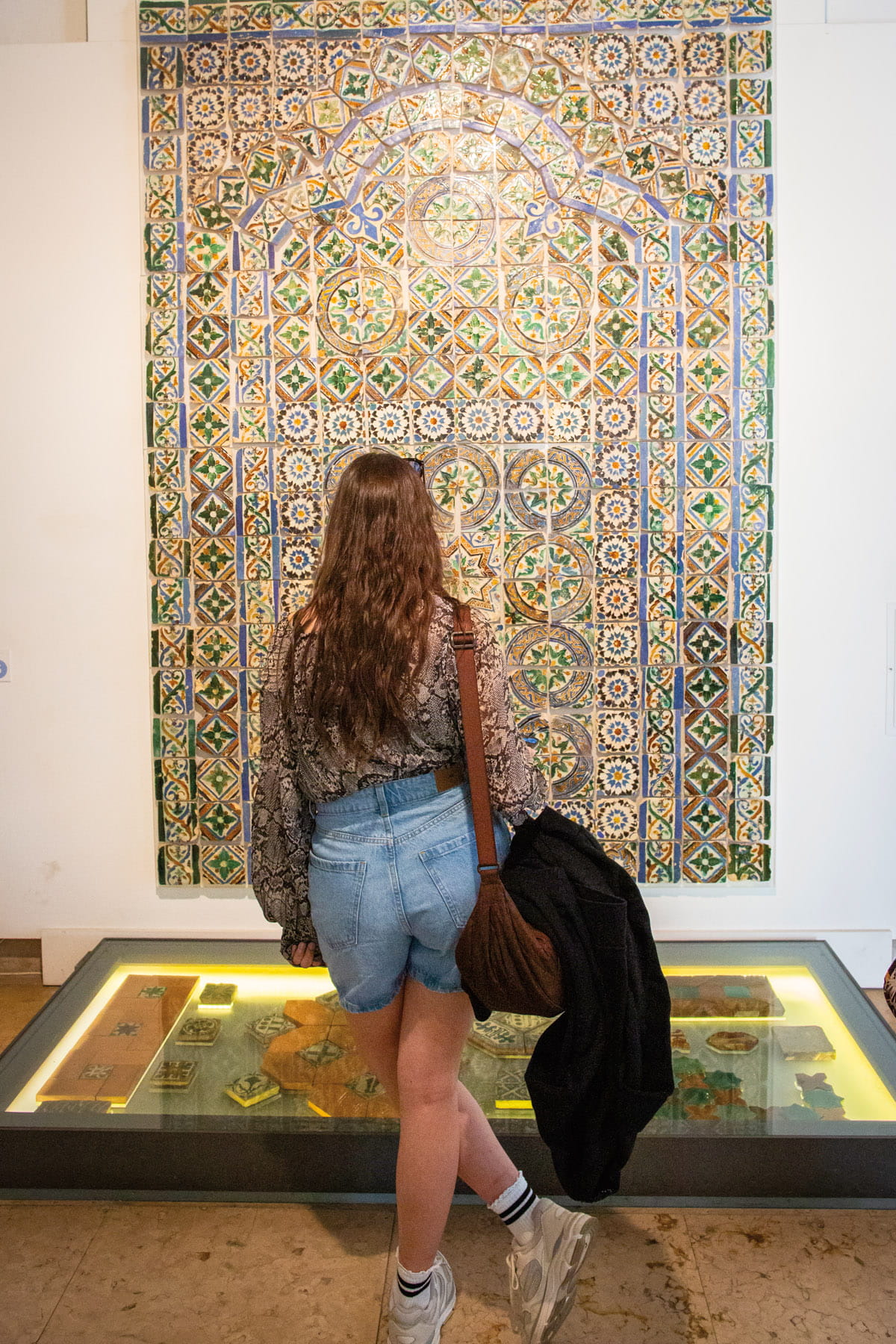
MOVING AWAY FROM THE MOORS’ TILEMAKING STYLE
While Moorish tilemaking was vital to Portuguese culture, its Islamic motifs clashed with the conventional tastes of Europeans. From the 1490s to 1527, Europe was experiencing the golden age of the Italian Renaissance. The legendary works of Michelangelo, Leonardo da Vinci, and Raphael were in vogue as the continent shifted from the abstract art of the Gothic era to hyper-realistic depictions of people in dynamic poses.
“[Moorish-style tilemaking] is something that there’s not a lot of people doing.”
At the museum, Constança Lima takes a few steps down the timeline to reveal tiles markedly different from those Manuel I admired in Seville. The geometric shapes remain, but the focus turns to caricatures of animate objects.
The tilemaking process had also changed dramatically. The labor-intensive alicatado technique of tiny mosaic pieces gave way to the Hispano-Moresque arista method. Artisans pressed soft clay into square molds, painted the surfaces with metallic pigments, and then baked them. The technique allowed for prestigious pieces of tableware that reflected light like polished metal, and it proved far more efficient than assembling mosaics from small fragments.
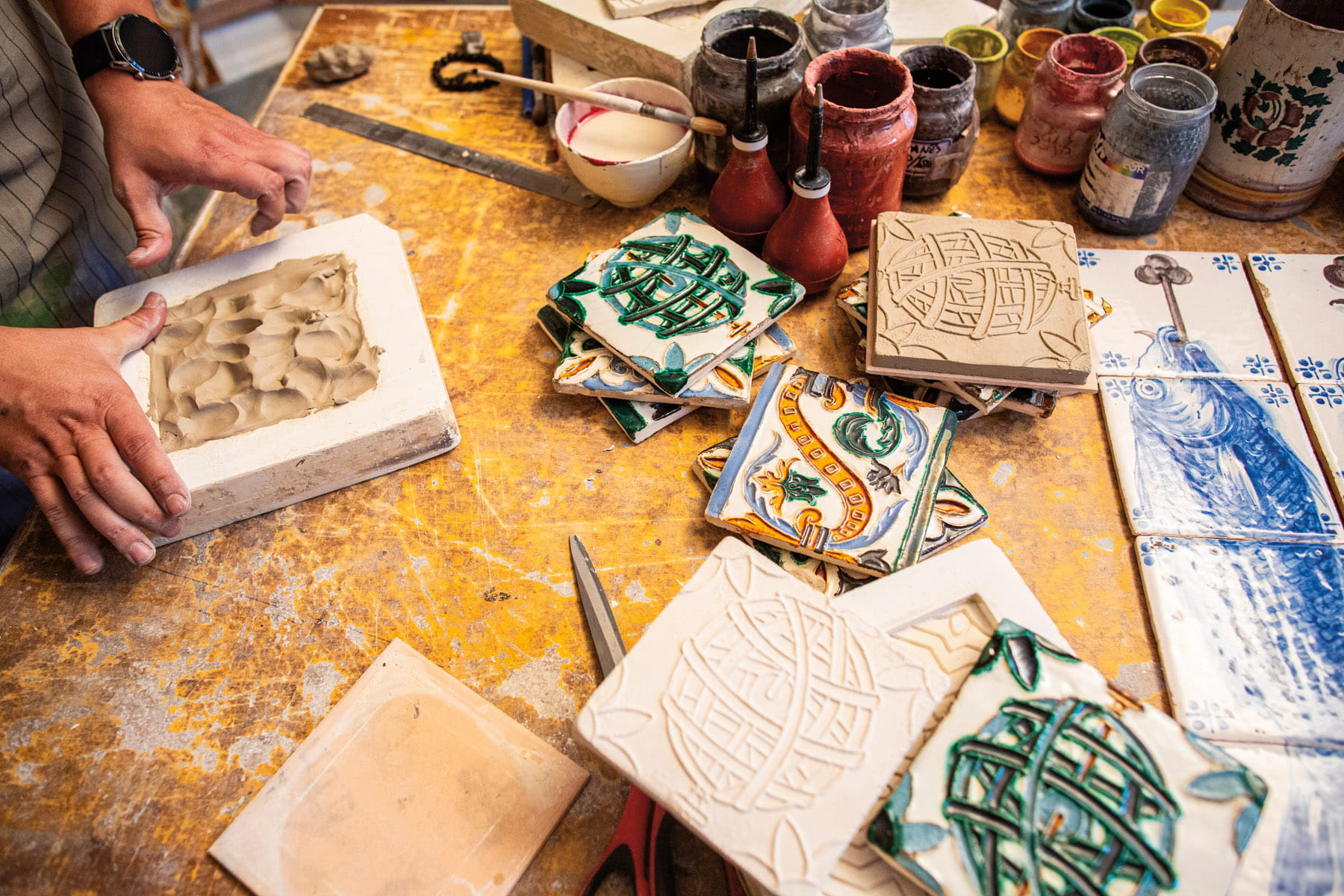
But even this technique was no match for what emerged from Florence, Italy. “In the middle of the 16th century, the Italians developed the maiolica technique, which is a much faster and cheaper methodology of making tiles,” says Lima. Instead of filling in cavities with glaze, ceramicists painted directly on the clay, treating it like a canvas. This breakthrough not only enabled mass production but also allowed the Portuguese to source tiles from other European manufacturers.
In the years that followed, Portuguese tiles were produced by Flemish artists who leaned heavily on the white-and-cobalt-blue coloring made popular by Chinese porcelain. By the 18th century, this marked a complete departure from the Moorish esthetic—one that remains popular today.
Rebelling in the Name of Preservation
On Miguel Moura’s worktable, copper and manganese oxides, cobalt, and metals such as pewter and iron form a kaleidoscope of paints.
Having already fired the clay negative of his mold in a kiln heated to nearly 980 degrees Celsius (1,800 degrees Fahrenheit), he now fills the resulting polygonal shape—seen prominently in the Nasrid Palaces of the Alhambra in Granada—with green, blue, black, and honey tones.
For Moura, replicating this centuries-old Hispano-Moresque arista method is not just an artistic choice but a quiet act of rebellion, one that began a decade ago. “I went to Spain for a few months where my friend had a studio near Seville. I wanted to learn something different than the more common traditional blue-and-white style from the 18th century.”
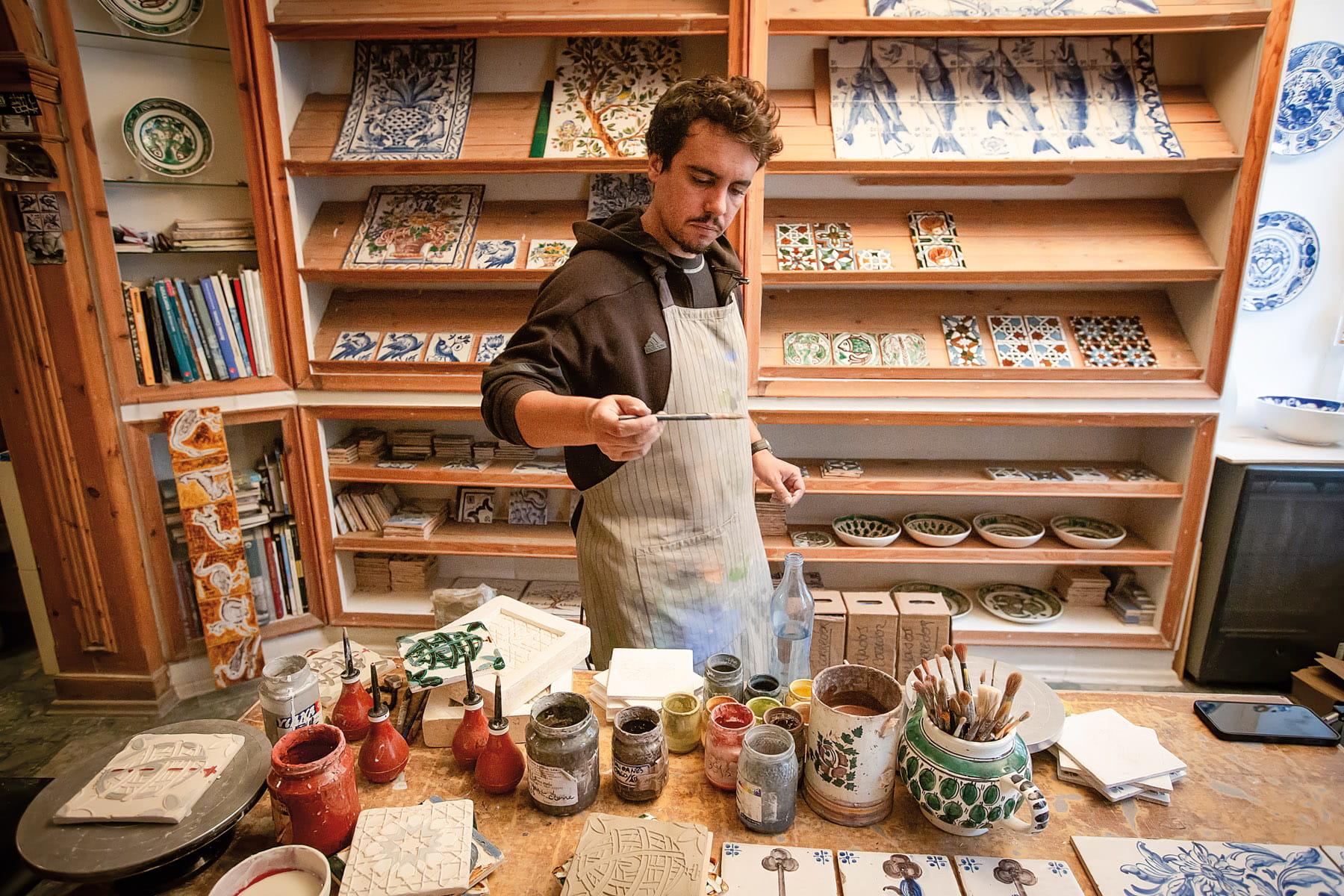
Having such a rare specialty has brought Moura into collaboration with companies in Portugal’s southern Algarve region that are restoring palaces once covered in Moorish tiles. Yet, in a nod to his ancestors, he acknowledges that the 18th-century style of tilemaking is what sustains his family’s business.
As an artist, though, profitability alone won’t keep him motivated for the next 30 years. “Sure, this is not the core business. However, I don’t want to feel like I work in a factory that produces millions of identical tiles. I want to create something unique, something special. This is something I’m doing to keep this tradition alive.”
Reading Questions:
Describe the importance of Portuguese tiles to the country’s artistic heritage.
Portuguese tiles are considered the top highest forms of the nation’s art. They adorn apartments, churches, subway stations, theaters and nearly every type of surface.
Why dd the subject matter of tiles made in Portugal change between the 15th and 16th centuries?
The Italian Renaissance reshaped artistic taste in Europe, moving from from Gothic to more hyper-realistic imagery of people in dynamic poses.
How has Miguel Moura kept the older tradition of tilemaking
He traveled to Spain and learned about more traditional ways of making tiles. He works with companies restoring palaces that have the older, more traditionally made tiles.
Other lessons
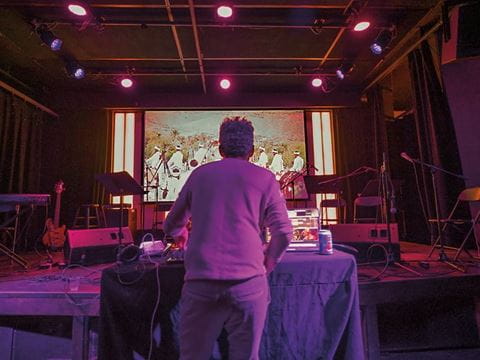
Interpret Tradition in Transition: Remix⟷Culture’s Role in Reviving and Reimagining Folk Music
Media Studies
Art
North Africa
Americas
Investigate how traditional melodies gain new life through Belyamani’s blend of cultural preservation and cutting-edge remix artistry..jpg?cx=0.31&cy=0.53&cw=480&ch=360)
Building Bridges in the Classroom: The Stari Most Story for Teaching Writing and Cultural History
For the Teacher's Desk
Teach students how to uncover details through metaphor telling the story of their communities.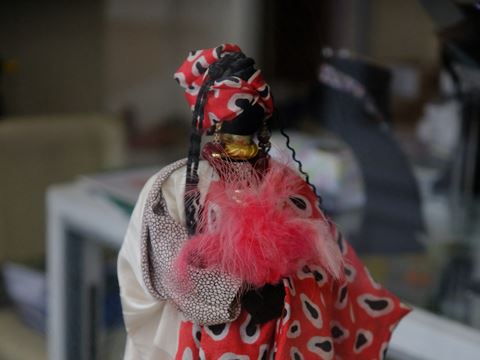
The Hill Rice Connection: Trace Its African Diaspora Roots and Examine How Communities Sustain Its Heritage
History
Geography
Anthropology
West Africa
Americas
Explore the connections between rice and African American agricultural history and analyze how hill rice connects to African American agricultural history and examine the Gullah Geechee community’s efforts to preserve this heritage through cultivation and storytelling.